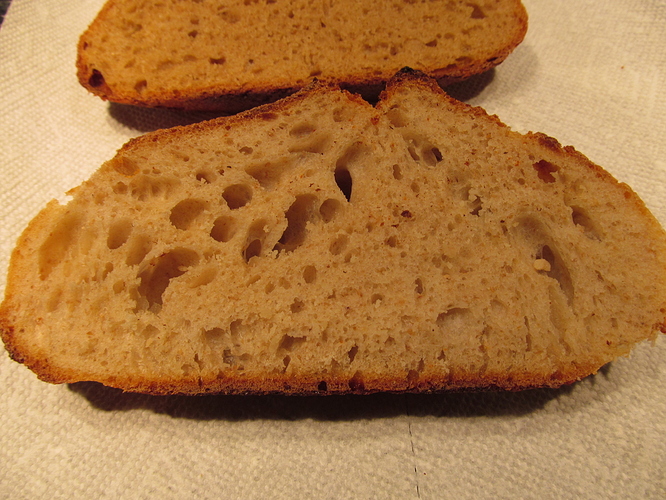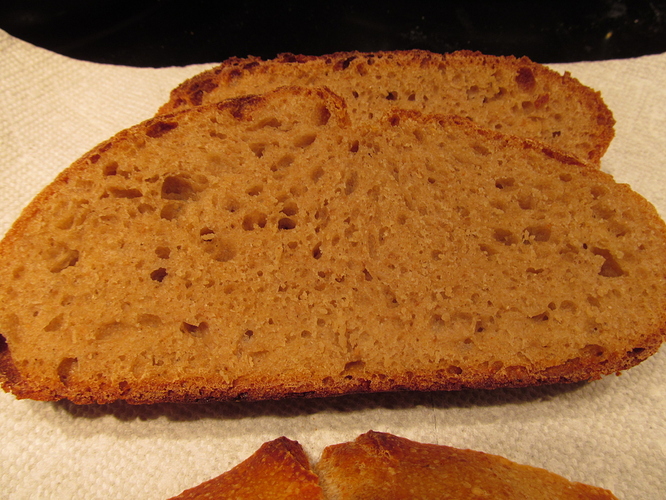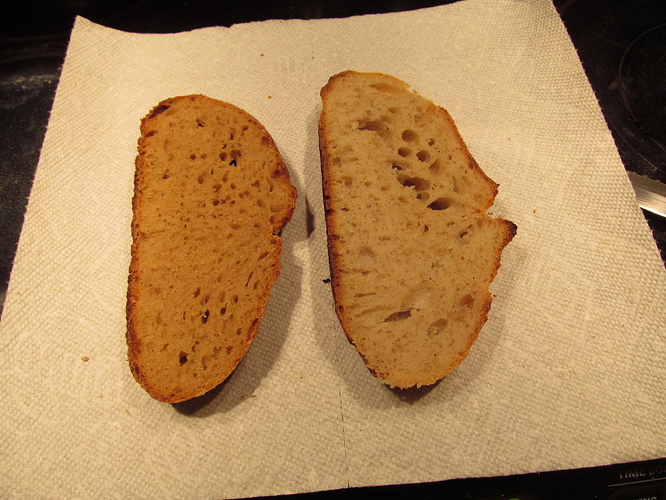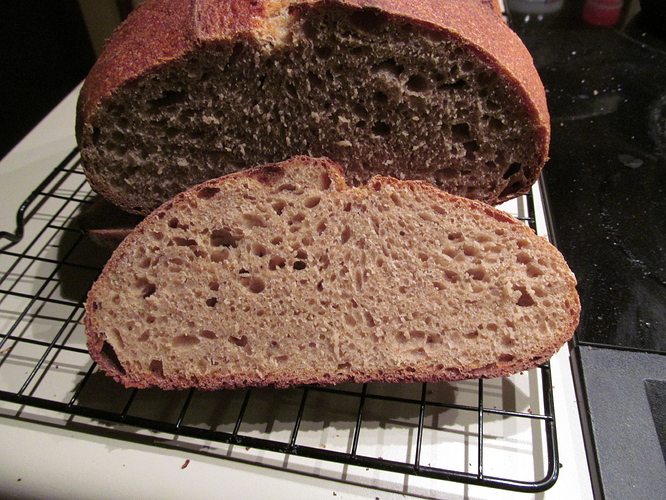Cool experiment! Thanks for sharing. I think I’ve had a similar experience – the homemilled was a more thirsty dough and thus held it’s shape and had better oven spring than stone milled by a big mill, but also had a tighter crumb.
These were to results, halogen lights made a couple come out a funny color but it is hard to find natural light at 2 AM.
I didn’t taste much difference in the two loafs but both were good. Yep, I think the second loaf would have benefited from another 10% hydration if not a little more. I’m still a novice to sour dough and grinding your own flour but learning fast from this forum. I love my Kitchen Aid Pro mixer now that I have figured out how to use it correctly. Lots of trial and error in the process.
Those both look really good. I’m surprised at how much lighter in color the storebought whole grain is.
What are your stand mixer tips if you don’t mind me asking? (I tend to throw everything in. Use the dough hook and scrape down a lot in the beginning)
no problem with oven rise there!
For some reason, maybe I read it somewhere, I thought one of the purposes of the stretch and fold was to help keep the fermentation even particularly on large (commercial) dough amounts where the internal part would stay warmer and act faster than the external part. (?) That we (Melisa and myself included) aren’t seeing huge differences in crumb in the Lahey no touch vs the S&F method. What drives my bread success is nailing the fermentation stages right, and the Dutch Over cookery (because I don’t have a $60K steam deck oven). I’ve bought into Trevor’s voodoo crumb making and really believe its all in the touch. One of my best crumbs came from a 4 hr autolyse followed by some seriously amateur slapping and folding ala Bertinet…so yeah peevee I think you hit the nail on the head.
Was wondering if you could give me some tips using the Kitchen Aid. I’ve been more or less frustrated with its seeming lack of ability and the constant stopping to re adjust the dough, so actually use my hand more often than not.
Muchohucho what I have found on my Kitchen Aid mixer (pro model) is when working with a wet dough or blending dry ingredients I mix it with the paddle as it tends to clean the sides of the bowl better. Then I add my water start mixing until all the dry ingredients are mixed in. When the dough gets sticky enough I switch to the dough hook and continue mixing until I can get a good window pane test. Also if the dough is hanging on the dough hook and just going around for the ride, stopping the mixer and let it slide off the hook and stick to the bowl then restart the mixer also helps. One last thing if your mixer can handle it, using speeds above 2 will also sling your dough off the dough hook until it gets real firm.
In the experiment I used King Arthur bread flour in the whiter loaf. In the other I used hard white wheat I ground and then removed the bran with a 40 mesh sieve. In both loafs I also used regular store whole wheat and rye flour. The recipe called for 510 grams bread flour, 30 grams rye,and 27 grams whole wheat, Along with 341 grams water, 14 grams salt, and 227 grams of starter.




